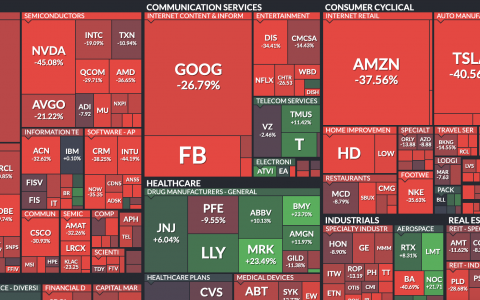
(Jerry Wagner, Flexible Plan) When we have bouts of volatility, it is important to remember what Jay Mooreland, the founder of the Behavioral Finance Network, says, “The market’s volatility is not your volatility.”
These words are a warning to investors against identifying their own investing with what they see, hear, and read in the media about the general activity of the financial markets. Whether you are an investor in stocks, bonds, or gold; have a diversified portfolio in all three; or have most of your portfolio invested in dynamically risk-managed strategies, it is important to realize that the experience of the most-watched indexes is not necessarily yours … unless you let it be.
When the market goes on a volatility binge, stick to your investment plan
We know that the market moves relentlessly and that it can be trending up, down, or sideways in whatever period we want to examine. But if you are an investor working with a financial adviser, those market moves have already been accounted for in the portfolio plan developed for you.
The plan can be as simple as being diversified in asset classes or can be as comprehensive as a turnkey, automated portfolio of dynamically risk-managed strategies like our QFC Fusion 2.0 strategy. In the former case, your adviser is relying on just one defensive tool, diversification, for volatility protection. In the latter case, literally dozens of protective measures are being enlisted on your behalf in securing the same goal.
The important message, though, is that investors working with a financial adviser have a plan for dealing with volatility when the market binges on it.
One way that you can overindulge in the effects of the market’s volatility is to watch your account values too frequently. It’s true that if you are invested in a passive asset-allocation portfolio, it might be looked at only once every quarter—and then the likely move is a hesitant tweak of the mixture. In contrast, dynamic portfolios are monitored and altered frequently, sometimes even daily. Either way, the amount of management is related to the portfolio plan developed by the adviser.
In other words, you already have a plan for these volatile days! There is no reason to micromanage the manager. Behavioral scientists tell us that reviewing your statements even quarterly is too often, let alone daily. These same experts report that the ideal reviewing frequency is yearly.
It follows that the other way that investors can become a victim of volatility is to abandon the plan that their financial advisers have laid out for them. Most portfolio plans establish a goal for the investor.
The strategy chosen for the portfolio to follow has been determined by your financial professional, with your considerable input, as the path to follow to achieve that goal. Volatility can only upset that plan if clients allow it to cause you to quit the plan and leave the path their adviser has worked out for them, allowing themselves to be lost in the tall weeds by the side of that road.
At Flexible Plan Investments, we provide you and your clients with a tool to help you stay on the correct path: your personal benchmark. Our OnTarget Monitor—included with every statement and available on our OnTarget Investing website—uses the power of statistical probability to let you know if you are on track to reach the goal established when you started investing with us. It also tells you (when it is in the red) if additional help is needed to interpret the results or adjust the plan.

This should be all the reason necessary for clients to stick with their financial adviser’s plan to reach their financial goal and not let market volatility become their volatility.



